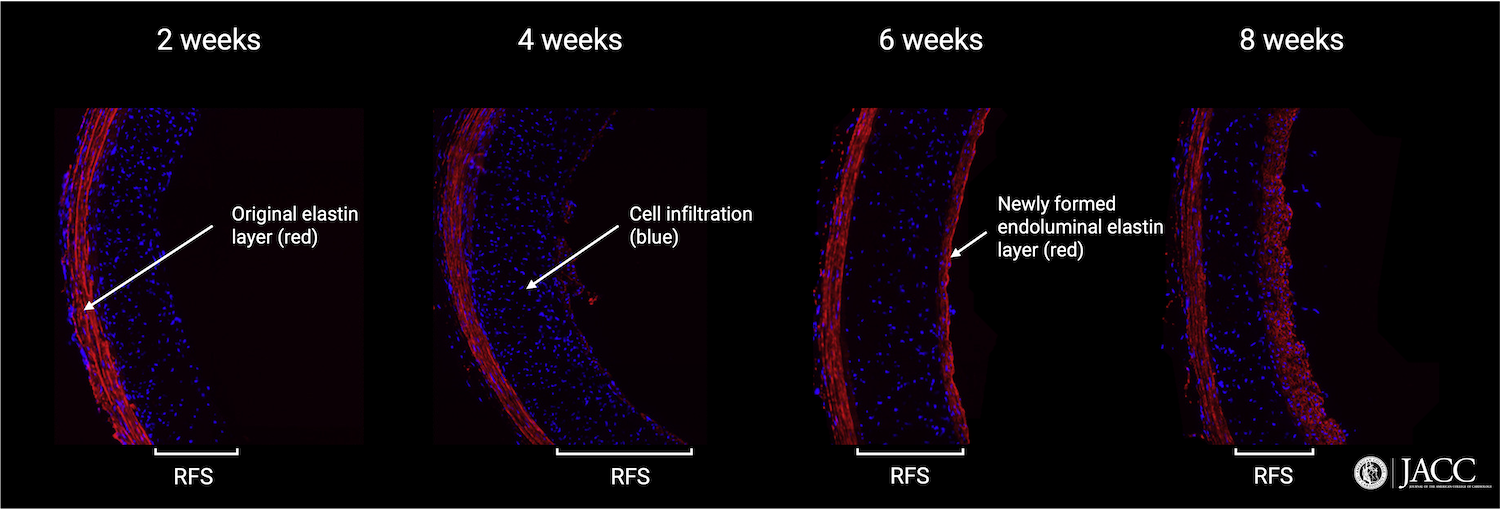Technology
Transforming vascular reconstruction
We believe the unique properties of the RFS hold tremendous potential across a range of endovascular indications to become the new standard. STENTiT is at the forefront of transforming vascular reconstruction.
See how the RFS transforms into an artery
Our pre-clinical studies show that the RFS promotes a beneficial M2-mediated macrophage response. The RFS facilitates the reconstruction of an artery including rapid endothelialization and supports the formation of a new layer of endoluminal elastin – regarded as the holy grail in tissue engineering.


Drag the slider to see how our stent transforms into an artery.
Features

Expandable
The RFS is tuned to allow endovascular deployment while providing mechanical support.

Regenerative
The RFS facilitates a natural healing response to reconstruct the artery from the inside-out.

Flexible
The RFS allows for flexibility to easily navigate through the peripheral anatomy.

Uniform lumen
The RFS is smooth along its entire length to prevent blood flow turbulence.

Resorbable
The RFS’ porous design provides a large surface area resulting in complete resorption in only 12 months.
Resorbable Fibrillated Scaffold (RFS) System
Click to learn more.

Resorbable
The RFS is designed to resorb fully within 12 months.
Strut-less design
The RFS is designed to have a smooth surface that allows for laminar blood flow through the scaffold.
Non-drug eluting
Due to the regenerative capacity of the RFS there is no need for an anti-restenotic drug to counteract progressive neointimal hyperplasia.
Catheter length
The RFS delivery system has a catheter shaft length of 150 cm.
Delivery System
The RFS is pre-mounted on a 0.014” Over-the-Wire (OTW) balloon-expandable delivery system.
Preclinical Evidence
Our pre-clinical studies show neo-endoluminal elastin formation at 6 and 8 weeks. This is considered the holy grail in tissue engineering.
